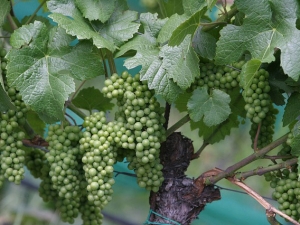New grape varieties planted on Nelson Marlborough Institute of Technology (NMIT)’s Marlborough campus vineyard are ready for their first vintage this year.
In 2012, NMIT viticulture and wine staff and students began replacing rows of Pinot Noir on the half-hectare on-campus vineyard with several new and classic varieties donated by Riversun Nursery in Gisborne. They completed further plantings in 2013 and 2014.
NMIT viticulture tutor Glenn Kirkwood says the new varieties have all grown “incredibly well” on the fertile soil, however it remains to be seen how the fruit pans out.
“We’ve been surprised by the amount of vigour and growth. However it’s too early to say how this will relate to the fruit composition,” he says.
Students studying NMIT’s viticulture and winemaking programmes will harvest the first grapes in March/April and Kirkwood says they expect to harvest around 4kgs per vine of fruit.
All of the students will be allocated a row, and they will each be making a micro-vin ferment under the watchful eye of wine tutor David Hayward, with the first wines from the new varieties ready for tasting around September/October this year.
Kirkwood says the new plantings over the past three years have focussed on trialling different cool climate reds.
“The one thing that’s probably missing from New Zealand wines is a cool climate red. Apart from Pinot Noir, there’s really nothing else,” he says.
The five new varieties for harvest this year are: Tempranillo (Spanish red variety famous for making Rioja), Gruner Veltliner (an Austrian aromatic white variety), Chardonnay (a new clone called 809), Verdelho (Spanish white variety from the Isle of Madeira) and Muscat á Petits Grains.
A row of Syrah/Shiraz from the Rutherglen region of Victoria, planted in 2012 was later replaced with a St Laurent after proving too vigorous. The other red being trialled is a Northern Italian variety called Lagrein, planted in 2014.
Kirkwood says he is “reasonably confident” that they will come out with at least a couple of varieties worthy of further investigation from the new plantings, but it’s early days yet.
“What we’ve learnt so far is to be very wise with our selections – it’s very important to select varieties to match soil type. The soil we have here is very vigorous - a silty loam which doesn’t really reflect a lot of Marlborough, which tends toward more sandy and free draining gravels. The exciting part will come once we can get multiple rows which will enable us to do some serious research with a good amount of fruit.”












